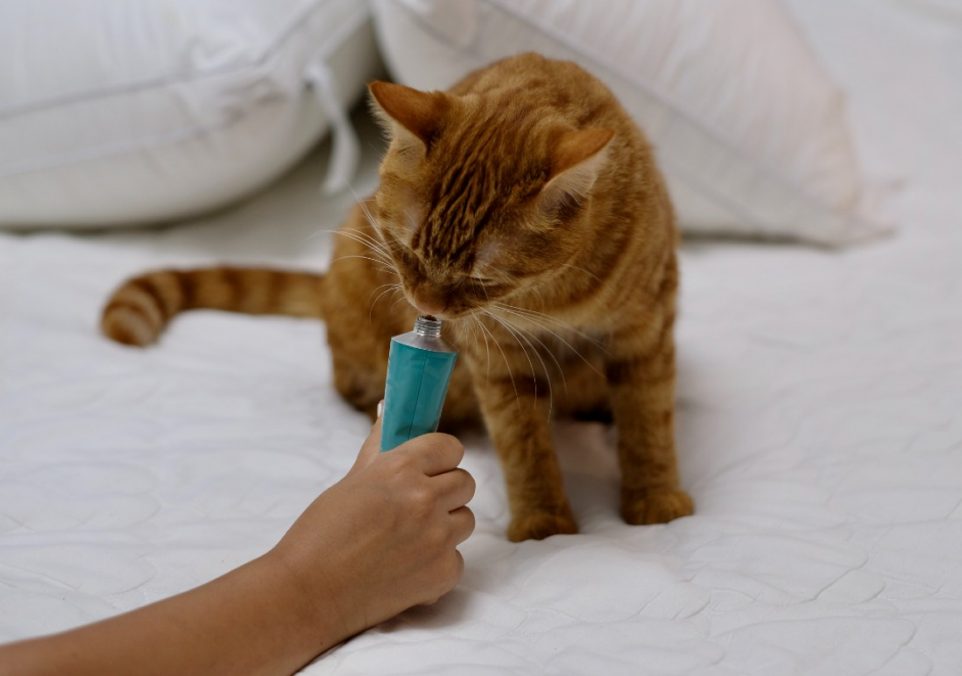3 Hairball Remedies for Cats That Work!

Hairballs are an inevitable part of having a furry feline friend in your home. While they may be a nuisance, they’re a sign of a healthy and active cat. It’s critical to remember that your cat is doing its best to keep itself groomed and brush all the excess fur into its digestive system. There are a few remedies that can help you avoid the dreaded hairball.
In this post, we’ll review three of the best hairball remedies that can help cats of all ages and breeds. We’ll discuss the pros and cons of each remedy, so you can determine which one is best for your pet. With the right remedy, your cat will be hairball-free in no time.
What Is Considered a Hairball?
A hairball, also known as a trichobezoar, occurs when a cat swallows clumps of fur while grooming itself. Typically found in cats with longer coats, the stomach and intestines can’t break this hair down, and it can cause an accumulation of hair or other particles in the gastrointestinal tract. This action can cause vomiting and other stomach discomfort. Cats can also strain to pass the hairball or experience a loss of appetite due to stomach discomfort caused by it.
Home Remedies
There are countless home remedies for hairballs, but some are more effective than others. The most popular cat hairball remedy is simply adding more fiber to your cat’s diet, either through supplements or by adding grass. Many pet owners use olive oil to help lubricate the stomach and intestines and aid in passing the hairball. Adding pumpkin puree to your cat’s food can also help, as pumpkin is full of fiber and moisture, which will help them pass the accumulated fur more effectively. Many cats find comfort in playing with toys like wands or birds-on-a-string, which may help them groom less obsessively and reduce the amount of fur they swallow.
Vet-Approved Solutions
If your cat has persistent problems with hairballs, your veterinarian may suggest a specialized diet or prescribe a laxative to help break down accumulated fur. If they determine that the condition warrants further medical attention, they may suggest a bronchodilator or even an osmotic laxative like Metamucil. Before attempting serious diet changes, visit your vet to understand the causes of your cat’s hairballs. Your vet may ask about the frequency and type of hairballs you are experiencing, so don’t forget to track this information ahead of time.
Additional Tips
It is crucial to address any underlying issues causing the appearance of hairballs and take measures to prevent future bouts. If there is any additional stress in your cat’s environment, it is worth looking into reducing these stresses if possible. Regular brushing several times a week will help remove loose fur before your cat can swallow it. If you are dealing with an excessive amount of hairballs, consult your veterinarian to assess your pet.
Hairballs are a natural part of life when it comes to cats, but that doesn’t mean you have to live with them. There are numerous remedies available to help keep your pet free of hairballs. Home remedies may be as simple as adding fiber to your cat’s diet or playing with toys. It is critical to look out for any underlying issues that could be causing the problem and take measures to reduce them if possible. With the right combination of remedies and preventive care, your cat will be free of hairballs in no time.
Your Pet’s Best Interest, Always
At Pet Institute, we take pet care seriously. We're dedicated to transparency, impartiality, and the well-being of your pets in every article, review, and recommendation we provide. Our unwavering commitment to these principles ensures that you, our valued reader, always receive reliable and unbiased information. Let us be your trusted guide in the world of pet care and companionship.